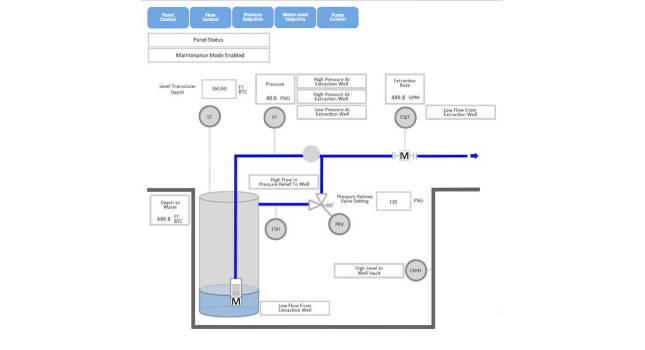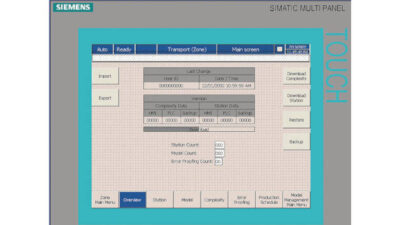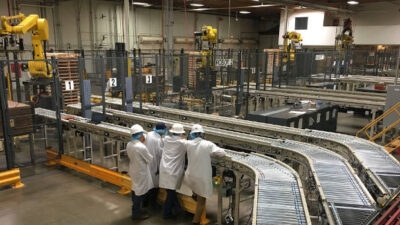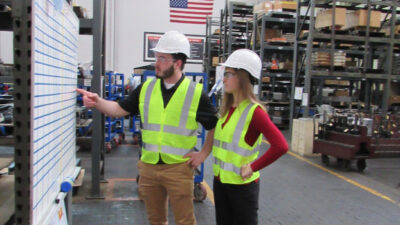A system integrator was asked to upgrade legacy hardware and software for a water well expansion project. Learn how the PLC and HMI upgrades happened.

Learning Objectives
- Learn how a system integrator worked on upgrading water well sites that were connected to legacy equipment.
- Learn the process they took and discover what the results were for the project and what the long-term outlook is for the company.
- See ways expansion of industrial network technologies in China is meeting industry-specific needs.
Project management insights
- Outdated equipment, including programmable logic controllers (PLCs) and human-machine interfaces (HMIs), can become problematic, particularly in sensitive applications and sites such as a company that handled water well sites.
- Upgrading legacy equipment is only part of the equation. The software must mesh well with the hardware and efficiently handle the operations it’s being tasked with.
Outdated systems have the potential to transform assets into liabilities. It is important to know the signs and risks of using outdated systems, and when it is the right time to invest in a modern solution. This was a challenge faced by a company specializing in environmental management services that operated 11 water well sites across a five-mile area. These sites were being controlled by legacy programmable logic controllers (PLCs) and human-machine interfaces (HMIs) and relied on slow serial radios for communication, posing several risks such as high maintenance costs, poor HMI responsiveness, and limited scalability due to the outdated equipment.
The customer recognized how the outdated system negatively affected productivity and efficiency which prompted requests for engineering support. The company worked with a system integrator to deploy a modern solution, which included upgrading PLC, HMI and radio controls as well as install an additional water well to expand operations.
Upgrading existing PLC, HMI, wireless hardware
Before installing the water well, the project team focused on updating the customer’s existing hardware, which included the PLCs, HMIs and radio controls. The integrator worked with a company that specialized in radio controls to investigate how to implement a modern Ethernet communications protocol for the customer with minimal disruption to operations. The research concluded the best order to implement the upgrades was in two phases. The first phase was to upgrade the access point (AP) radio at the customer’s control office, and then upgrade the remote radios that communicate to the AP and the main control PLC. With this information, the system integrator began developing the updated system.
The project team upgraded legacy controllers for newer controllers and terminals and programmed them. The application also integrated a supervisory control and data acquisition (SCADA) system, which provided an operation and management overview of the wells status to the customer’s local and corporate offices.
The project team set up an intermediate infrastructure at the customer’s control office that could run the water well upgrades in parallel with the legacy system. The team installed the new PLCs to run concurrently with the legacy PLCs, and configured messaging between the controllers so the main legacy PLC was unaware of the upgrades.
The team then upgraded the customer’s networking communications from serial radios to Ethernet radios with a more powerful antenna. The project team also decommissioned the legacy PLC and converted the water wells to run exclusively on the upgraded system.
The integrator also resolved challenges with the customer’s remote water wells which faced poor connections from antenna height limitations. The team implemented a store-and-forward capability for the remote radios, which transmitted data to a closer radio station and then forwarded to the main AP radio to improve data connectivity.
After modernizing the existing water wells, the new water well was installed and commissioned.

Project expands customer’s infrastructure
The project, including the design and control panel construction for the new water well, was completed in a few months. The integrator successfully supported the modernization of the customer’s outdated system by assigning subject matter experts in network design, radio configuration, PLC/HMI coding and conversions.
The implementation of the new system resulted in significant speed and reliability enhancements for the customer. Real-time data are available on a per-second basis instead of waiting for minutes, creating more trust about data value. Moreover, the customer managed to expand the existing infrastructure by integrating the new water well, effectively meeting growing demands and overcoming the challenges posed by a previous outdated system.
– This originally appeared on Automation Group’s website. Automation Group is a CFE Media and Technology content partner. Edited by Chris Vavra, web content manager, CFE Media and Technology, [email protected].
MORE INNOVATIONS
Keywords: system integration, project management
ONLINE
See additional project management stories.
CONSIDER THIS
Did you upgrade legacy PLC and HMIs at your facility and what were the short- and long-term results?



